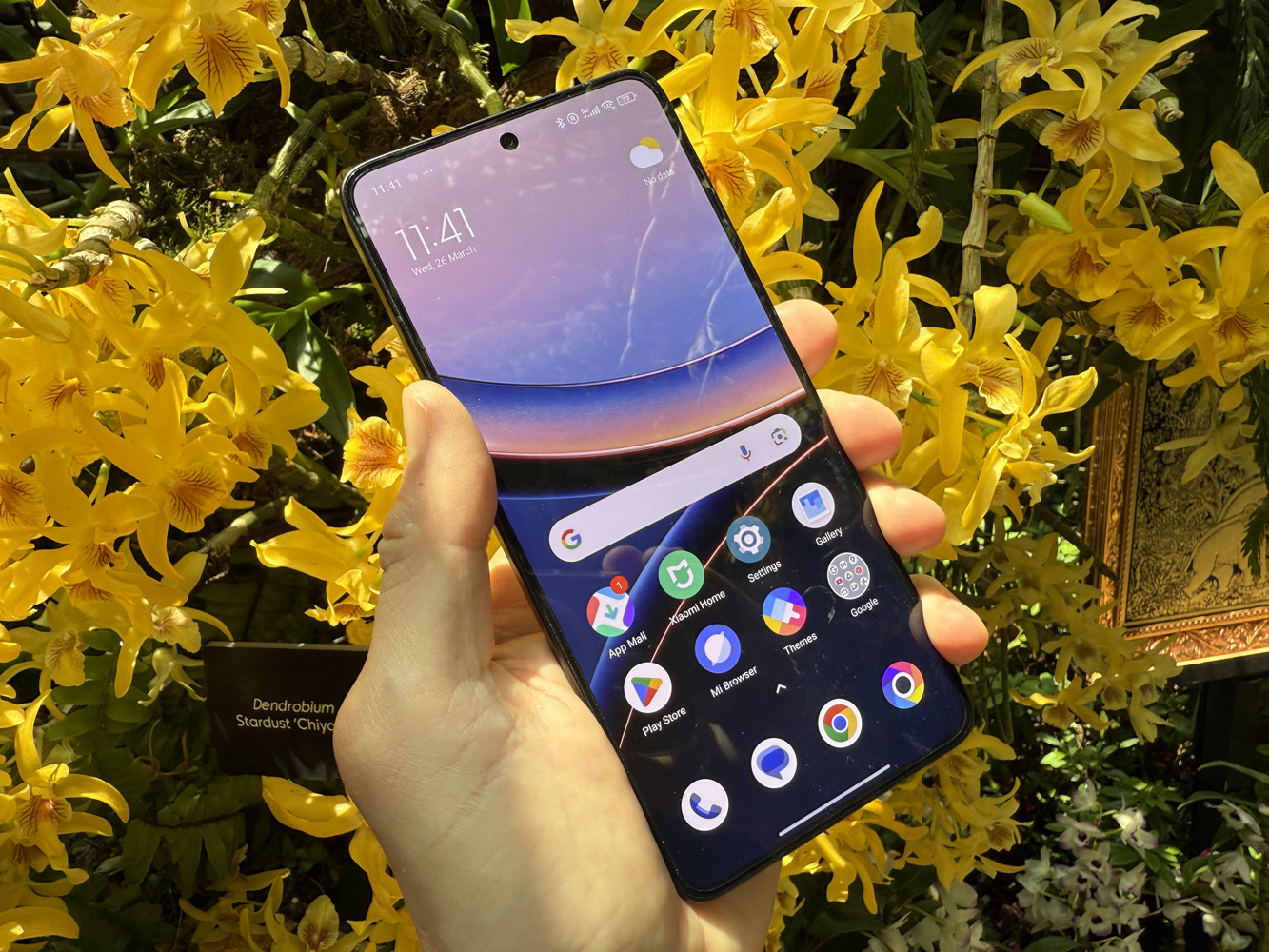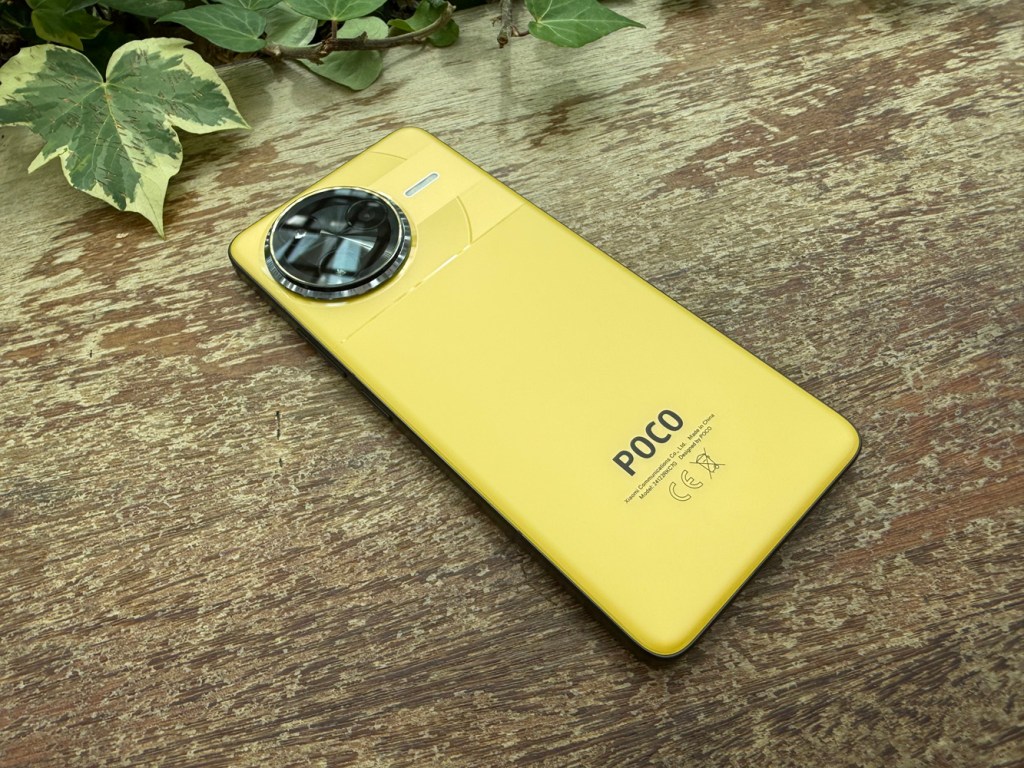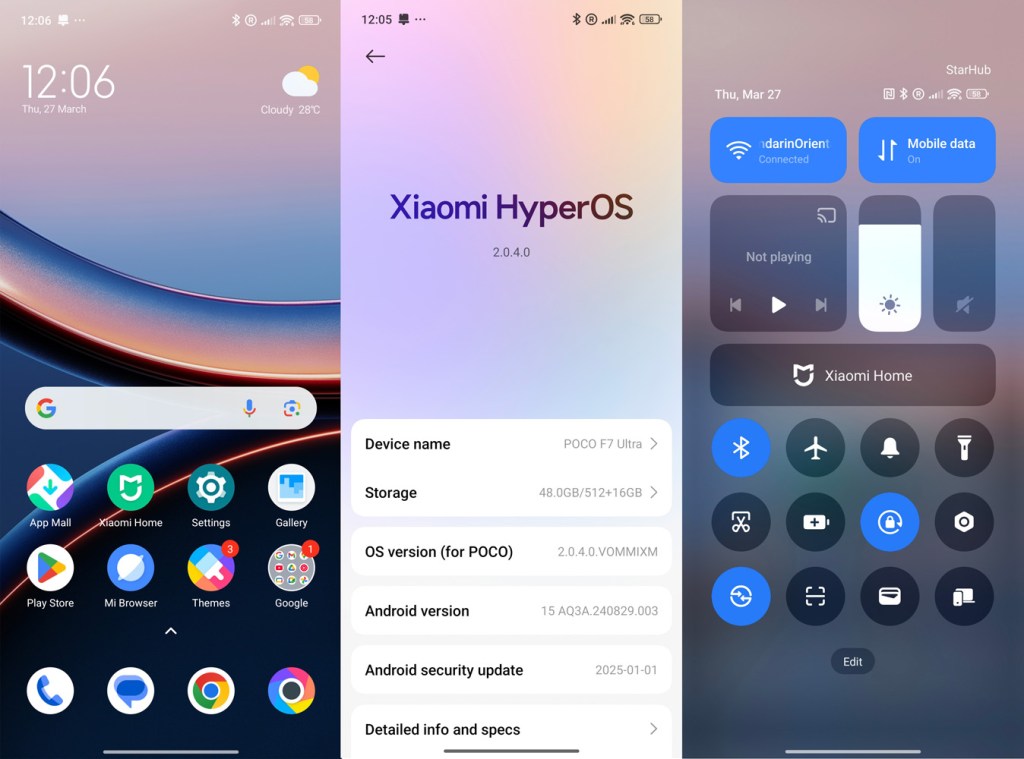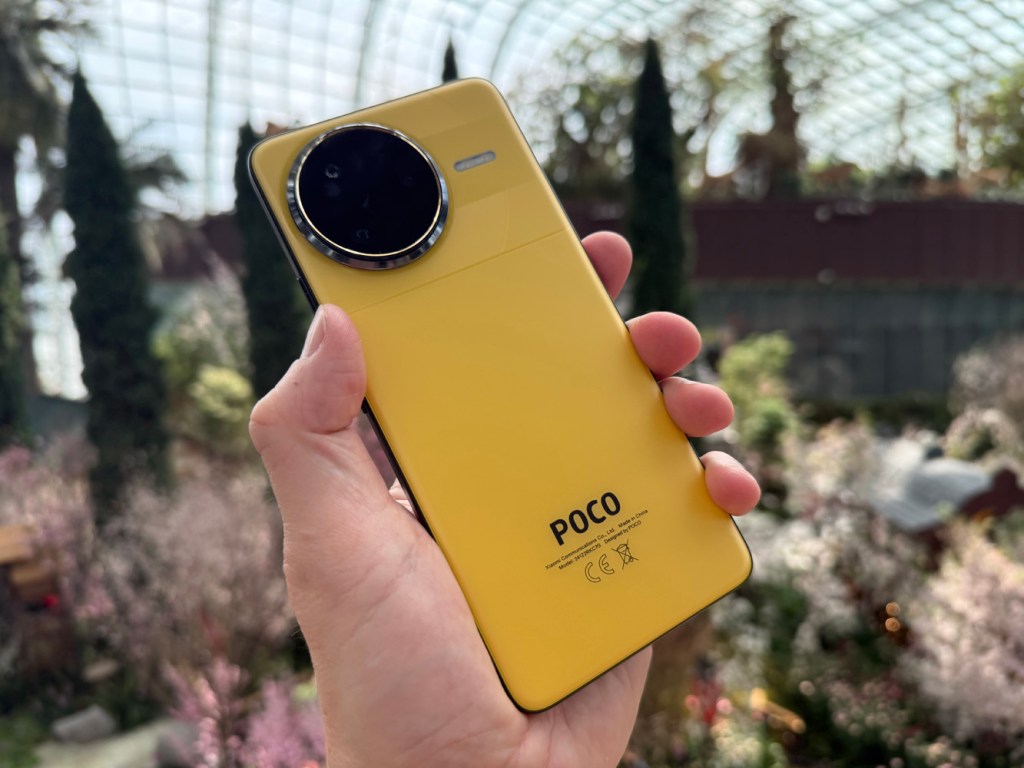Poco is inextricably linked with its parent Xiaomi, and both it and the Redmi brand are used to denote the same mid-range phones launched in different places.
So last year’s Poco F6 Pro was the Redmi K70 in different clothing. 2025 not only brings us the Poco F7 Pro, but also this – the Poco F7 Ultra which is the same internally as the Redmi K80 Pro.
This $649/£650 phone (for the 12GB/256GB model) has a very impressive core spec sheet including Qualcomm’s Snapdragon 8 Elite and while it doesn’t offer as much as some flagships out there, most potential purchases are getting most of what you’d expect from a flagship, even if there are a few things missing as you’ll hear. As such it’s going up against phones like the OnePlus 13R, Nothing Phone 3a Pro and Samsung Galaxy A56.
A rumoured Poco F7 5G phone is also coming it seems, powered by the cheaper Snapdragon 8s Gen 3, though this is unlikely to come to Europe and will head to India and other countries.
Design: there’s always black if you don’t like the yellow

The yellow colour of my review model is very striking and distinctive, though it’s not shiny and looks matt – it is a glass back though for wireless charging. Black is also available as you’d expect, though even if you get the yellow version the straight metal edges are matt black.
However, as is common in 2025, the edges are not angular and are rounded off. As such, it’s nicely tactile in the hand and it’s not at all glossy enough to retain fingerprints which is great. Full IP68 dust and water resistance is also standard.
The device weighs in at 212g which is directly comparable with other similar devices – it’s just a few grams heavier than the OnePlus 13R, for example.
The bezels around the display are exceedingly thin and you don’t feel like any space is wasted, with a small pinhole for the front-facing camera. Even so, face unlock is available and works very well indeed plus there’s an ultrasonic under-display fingerprint reader as a fallback. In reality though, you’ll hardly need it.
Display: brilliant colour and quality


The 6.67in 2K Flow AMOLED display typifies the quality on show here. This 526ppi display is undoubtedly impressive and was punchy even in brighter outside conditions (brightness is rated at 1800 nits but peak is a huge 3200 nits), though
Poco makes it clear that eye care is also prioritised thanks to a tech called Circular Polarization Technology, which converts linear polarized light into circularly polarized light – in other words, it’s designed to be more like natural daylight, which is interesting.
As you’d expect from a phone of this level, there’s a variable refresh rate of up to 120Hz and full support for the DCI-P3 wide colour gamut. Touch is wonderfully responsive. Poco says the screen is covered by its Shield Glass, but there are no claims as to how protective this is.
Specs: getting towards the high end


Like last year’s Poco F6 Pro, this year’s again uses flagship-level hardware in the form of Qualcomm’s recently new Snapdragon 8 Elite platform with full sub-6GHz 5G compatibility. There’s also an additional dedicated VisionBoost D7 graphics chip to complement Snapdragon’s Adreno GPU.
Poco says this extra is for “next-level speed, fluidity and visuals” but it’s not immediately obvious why it would be required over and above what the Adreno already provides. However, Poco is quite clear that this is not a gaming phone, but naturally you can play games on it.
My review model has 512GB of storage and 16GB of memory, but there is also a 256GB model with 12GB of memory instead. This latter model has the $549 price point, with the higher capacity model set at $599.
Whereas the F7 Pro has a 6000mAh battery, the Ultra stays at 5300mAh which is undoubtedly a little disappointing. Poco says this is because the phone would be thicker with the wireless charging on board as well, so it’s a compromise.
On the flip side, you can charge it at 120W instead of 90W for the F7 Pro, branded as HyperCharge (as with other Xiaomi devices dating back a few years). You can fully juice up the phone in a little over half an hour, which is rather appealing.
50W wireless charging is also supported with a compatible charger (available from Xiaomi). Battery life is fine – you’ll easily get through the day – but going much into the next morning will need a top-up. I’m looking forward to smartphone batteries being a little more capacious then they are currently as innovation has somewhat stagnated in this area.
One thing missing is eSIM support. Now, you can certainly argue that many of the countries this phone is aimed at don’t have as much demand for eSIM, but it is growing and it’s surprising not to see it included on a device with top-end ambitions. It is dual SIM, however, with the ability to use two nano SIMs.
Wireless connectivity is absolutely bleeding edge, with Wi-Fi 7 being joined by Bluetooth 6.0 – the first time I’ve seen this on a handset. There’s also dual-frequency GPS and NFC as you’d expect.
Cameras: a nice selection but there are better
The camera setup is an impressive triple 50MP setup with optical image stabilisation (OIS) on the main and telephoto lenses. Poco hasn’t revealed who makes these lenses. The company has traditionally prioritised performance over the camera setup, but this time it has been given a really decent boost.
The main f/1.6 camera boasts a 1/1.55in Light Fusion 800 image sensor. There are four focal lengths including 24, 35mm and 48mm for portrait shots. As you can see from my shots – especially below – it’s a pretty decent everyday snapper. I think it does struggle a little with very high contrast scenes where there is a bright light for example.
Night mode is a little so-so. On auto, it doesn’t kick in as often as you probably want it to, so you need to flick over to night mode if you definitely need it to kick in. And the results are not tremendous as you can see from our images.
Then there’s a 2.5in f/2.0 telephoto (60mm equivalent) as well as a 32MP ultrawide with a 120 degree field of view. It’s a floating 5x telephoto lens as we’ve seen in other Xiaomi company models dating back to the Xiaomi 13 Pro, meaning you can get really close to your subject. Up to 60x digital zoom is offered should you need it, though the results at that zoom level aren’t brilliant as you’d expect.


As you’d expect nowadays, there’s a bunch of different tech at work in the image processor (which Poco calls an AISP rather than an ISP). As you might have guessed, AI tech is at work here to combine the capabilities of both the hardware and the software.
Up to 8K video recording is supported (24fps) as well as 4K and Full HD (24, 30 and 60fps). 4K and Full HD footage looks generally excellent. Note that you can’t shoot 4K on the ultrawide camera.
Software: going Hyper isn’t a bad thing


Poco’s phones predictably share their software with Xiaomi’s Android-based HyperOS 2 based on Android 15. A full set Google apps are supplied as stock, but there is some encouragement to use Xiaomi’s own apps such as Mi Browser and App Mall from their prominent placement on the home screen. However, there’s no overt messsaging and it does feel like a light touch. That’s not always been the case for Xiaomi brands.
While there remains a Xiaomi sheen, HyperOS won’t feel at all alien from anyone coming from Samsung’s OneUI or even stock Google Android 15 on a Pixel phone.
You also get six years of security updates, plus four years of Android feature updates.
Poco says that HyperOS 2 includes three new elements in the form of HyperCore, HyperConnect for connection to Windows, MacOS or iOS and HyperCare to optimise the system for performance.
Xiaomi’s AI elements are branded as HyperAI which works alongside Google’s Gemini and basically includes deep integration with the standard Poco apps such as Notes and Calendar. There isn’t a big AI sell with this phone.
Poco F7 Ultra verdict


Poco’s latest and greatest is certainly an interesting device – it offers flagship specs in many ways yet lags behind some of the top phones in some key areas. Yet Poco isn’t here to produce expensive top-end devices; that’s for Xiaomi to do and, as we said in our Xiaomi 15 Ultra review, what’s on offer there is exceptional.
It’s always tempting to point of what’s missing rather than what’s here, but everything on offer from Poco has to be considered alongside the price point, which at $649/£650 is a complete bargain. As such, the Poco F7 Ultra hits a really sweet spot with premium powerhouse hardware for a modest cost.
Poco F7 Ultra tech specs
| Screen | 6.67in 3200×1440 120Hz AMOLED, 526ppi |
| Processor | Snapdragon 8 Elite |
| Memory | 12/16GB |
| Storage | 256/512GB |
| OS | Xiaomi HyperOS 2 (based on Android 15) |
| Cameras | 50+50+50MP rear, 32MP front |
| Battery | 5300mAh (USB-C up to 150W wired HyperCharge, up to 50W wireless) |
| Dimensions | 160x75x8.4mm |
| Weight | 212g |













